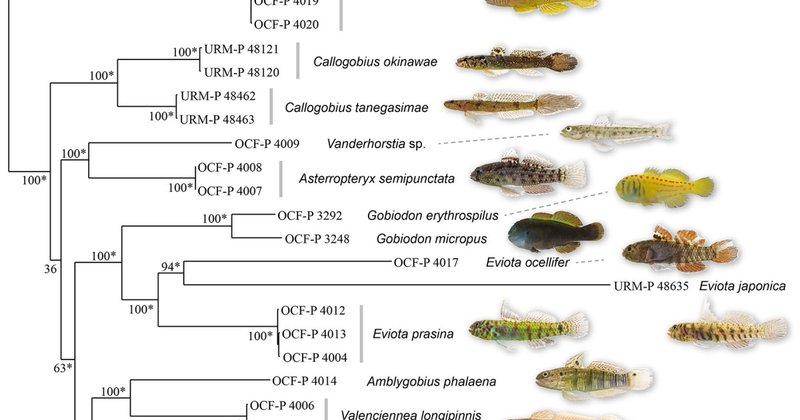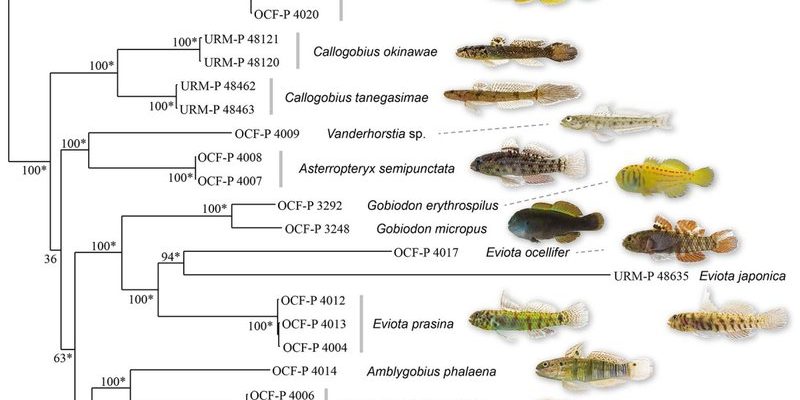
Think of gobies as nature’s little warriors. They’ve adapted to some of the most challenging conditions, whether it’s shallow coastal waters, freshwater streams, or even the murky depths of rivers. Each goby species has its own set of tricks for overcoming obstacles, much like how we find solutions to everyday problems. Let’s dive deeper into their evolutionary journey, exploring how these small fish have become such successful survivors in our planet’s ecosystems.
What Are Gobies?
Goby fish belong to the family Gobiidae, which includes over 2,000 different species. They’re known for their small size and elongated bodies, with many species measuring just a few inches long. These fish are often found in both marine and freshwater environments, making them incredibly versatile. Picture a goby lounging on a sandy seabed or darting around rocks in a freshwater stream—these little swimmers are everywhere!
One of the most interesting features of gobies is their ability to form symbiotic relationships with other species, particularly shrimp. For example, the shrimp-goby partnership is a classic example of teamwork in the animal kingdom. The shrimp digs and maintains a burrow, providing a safe home for both itself and its goby companion. In exchange, the goby keeps an eye out for predators, letting the shrimp know when it’s safe to come out. This relationship showcases not only their adaptability but also their social behaviors.
Another notable aspect of gobies is their unique reproductive strategies. Many species have complex mating rituals, often involving elaborate displays of color and movement to attract mates. This incredible variety in reproductive behavior speaks volumes about their evolutionary success—after all, the more offspring you can produce and protect, the better your chances of passing on your genes!
Evolutionary History of Gobies
The evolutionary roots of gobies can be traced back tens of millions of years. Fossils indicate that gobies began to diverge from their ancestors during the late Cretaceous period, evolving into the diverse group of species we see today. Their ancestors adapted to life in both saltwater and freshwater, which allowed them to exploit various ecological niches.
Throughout their evolutionary journey, gobies have developed numerous traits that help them thrive in different environments. For instance, their flattened bodies and fins have evolved to allow them to navigate tight spaces and swim efficiently in turbulent waters. Over time, gobies have also adapted to varying salinities, making them a prime example of evolutionary resilience.
Interestingly, gobies are also a hot topic in research related to biogeography, which studies how species spread and adapt to different environments across the globe. Scientists have found that gobies have colonized new areas through both marine and freshwater routes, leading to a rich tapestry of diversity. This adaptability might explain why gobies are some of the most widespread fish in the world.
Diversity of Goby Species
When we look at gobies, we find a stunning variety of species, each with its own unique adaptations. Some gobies, like the clown goby, are famous for their vibrant colors and small stature. Others, such as the fuzzy dwarf goby, are masters of camouflage, blending seamlessly with their surroundings. Here’s a quick look at some notable goby species:
- Clown Goby (Gobiodon spp.): Brightly colored and often found in coral reefs.
- Fuzzy Dwarf Goby (Eviota spp.): Known for its minute size and incredible ability to hide.
- Sand-dwelling Goby (usually found in muddy or sandy substrates): These gobies are outstanding burrowers, making them excellent at avoiding predators.
Each of these species showcases different adaptations that help them survive and thrive in their respective habitats. This diversity is a testament to the incredible evolutionary potential of gobies, which have successfully inhabited both marine and freshwater ecosystems across the globe.
Gobies’ Role in Ecosystems
Gobies play a significant role in the health of both marine and freshwater ecosystems. They are often considered indicators of environmental health due to their sensitivity to changes such as pollution or habitat destruction. By studying goby populations, scientists can gain valuable insights into the overall health of their habitats.
In coral reef environments, gobies contribute to the ecosystem by helping to maintain the balance within their community. They serve as both prey and predator within the food web—eating smaller organisms while being food for larger fish. Their interactions help support the biodiversity that is key to healthy ecosystems.
Moreover, gobies often engage in bioengineering activities. For instance, their burrowing can aerate the substrate, which benefits other organisms living in the sediment. By creating homes and spaces in the sand or mud, gobies help cultivate rich environments for other aquatic life to thrive.
Conservation Challenges Facing Gobies
Despite their adaptability, gobies are not immune to the threats posed by human activity. Habitat destruction, pollution, and climate change are significant challenges that many goby species face. Coastal development often leads to the loss of critical habitats like mangroves and coral reefs, which are essential for their survival.
Additionally, climate change impacts ocean temperatures and salinity levels, which can affect goby populations. Warmer waters can lead to altered reproduction cycles and decreased food availability. As environmental conditions change, some gobies may struggle to adapt quickly enough, putting their survival at risk.
Conservation efforts are crucial to protect these remarkable fish and their ecosystems. Efforts can include habitat restoration, pollution control, and research into the specific needs of different goby species. By taking proactive steps, we can help ensure that gobies continue their evolutionary journey for generations to come.
The Future of Gobies
As we look toward the future, the evolutionary journey of gobies continues to unfold. With ongoing research and discovery, we’re learning more about how these remarkable fish adapt to their environments. Their survival depends not just on their inherent abilities but also on our commitment to protecting their habitats and addressing the challenges they face.
The resilience of gobies serves as a reminder of nature’s ingenuity. They’ve shown us that even the smallest creatures can have a big impact on the world around them. By appreciating and understanding their evolutionary journey, we can cultivate a deeper respect for biodiversity and the interconnectedness of life on Earth.
In conclusion, the evolutionary journey of the goby is not just a tale of survival; it’s a story of adaptability, complexity, and the intricate dance of life that occurs beneath the waves. As we continue to study and learn from these fascinating fish, we must also do our part to protect their habitats and ensure a thriving future for all marine life.

